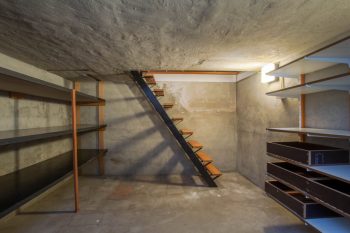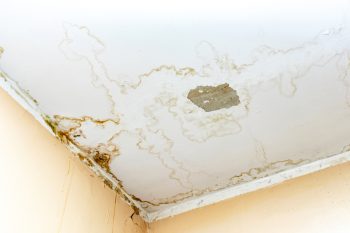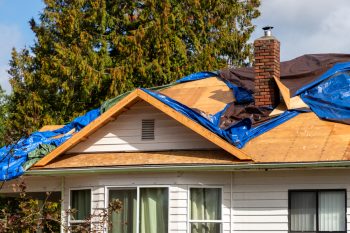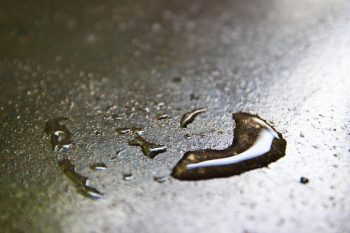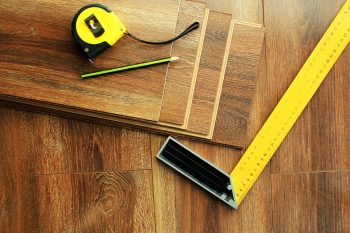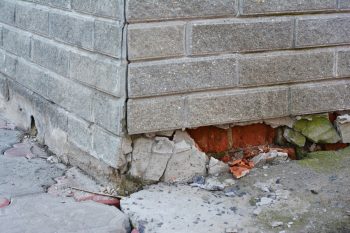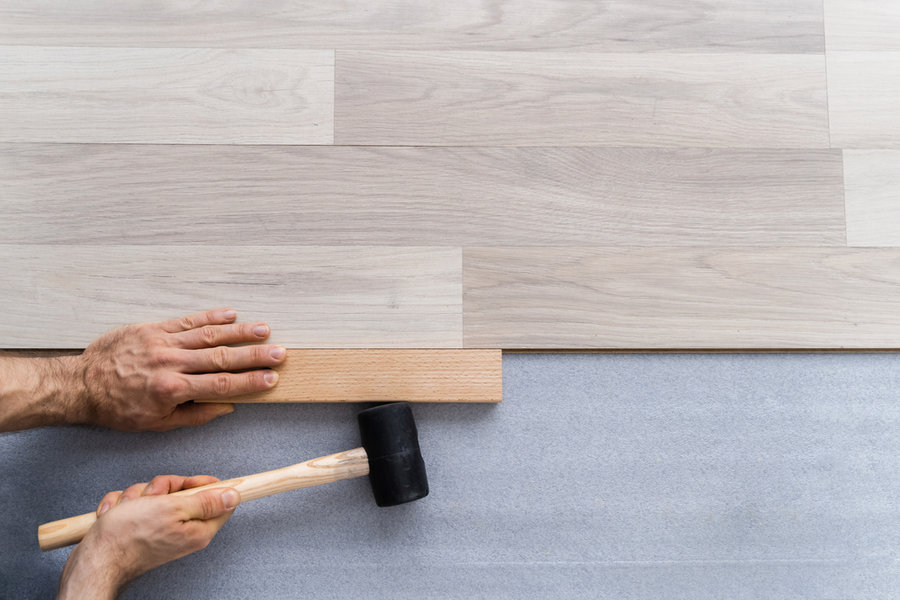
Laminate flooring is a popular type of flooring in a house as it is affordable, durable, and pleasing to the eyes. But, like any other material, it is prone to scratches and damage.
The question here is whether it is possible to repair laminate flooring. And if so, how can people do it?
Laminate flooring is a synthetic, multi-layered type of floor that looks like the wood or stone flooring of the house, but it is cheaper than that, and it is easy to install, so people prefer it over other types of flooring.
There are different ways of repairing laminate flooring. These repair works are simple, and house owners can easily do it; but when things do not seem to work as planned, calling a professional is the best solution.
Many laminate flooring issues need repairing. Some of these issues are:
- Scratches and cracks in the laminate flooring.
- Separating or buckling of laminate flooring.
- Damaging of laminate flooring by water.
- Replacing damaged laminate planks.
For the repairing of laminate flooring, one should have these items:
- A floor repair marker, wax, or crayon.
- Repair putty.
- A laminate repair kit.
- Spare planks.
- Putty knife.
- Gloves.
The main decision to make here is about repairing or replacing the whole laminating floor. Repairing a laminate floor does not cost much compared to replacing the complete floor, but it also depends on its condition.
If the laminate flooring is beyond repair, it is better to replace it, but if the damage is not severe, it is best to repair it.
Repairing laminate flooring is not that difficult, and any house owner with some basic knowledge of construction and especially about repairing can do it. Repairing the laminate flooring depends on finding the kind and extent of damage, so planning the repair work accordingly.
Be careful when fixing laminate flooring, or one might end up with more scratched or broken planks.
Repairing Different Types of Damaged Laminate Flooring
Over time, due to natural and unnatural reasons, wears-and-tears issues on the laminate flooring are unavoidable. The wears-and-tears of planks make the house look bad and uncool.
More importantly, if there is a delay in dealing with these problems, the whole laminate flooring can get damaged, which may result in replacing the floor.
The damaging of laminate flooring of different types, and each type requires different ways to repair them. Some damages are fixed in no time, whereas others are a little complex and need more time.
1. Scratches and Cracks on the Laminate Flooring
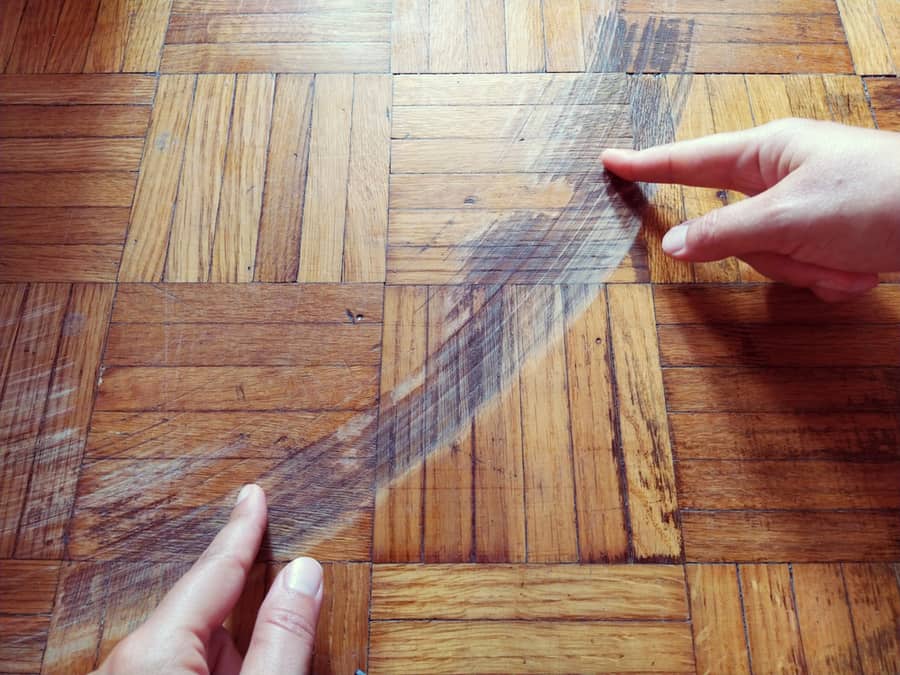
Scratches on the Laminate Flooring
One of the most common issues with laminate flooring is the occurrence of scratches because of dragging furniture, pets, or other things.
Using a marker or repair kit on a simple scratch mark on the laminate flooring can remove the issue in no time. One can follow these steps to do so.
- Clean the scratched area properly with a damp cloth.
- Fill in the scratches with the marker and do it evenly.
- Let it dry completely.
- Using a repair marker is the same as using any colored pencil.
- Rub the place with a clean cloth for a smooth ending after repairing it.
If the scratch is deep, using putty is a better option.
- Clean the scratched area properly with a damp cloth.
- Let it dry completely.
- Fill in the deep scratches with putty using a putty knife.
- Apply the putty evenly, clean the extra putty with the knife and let it dry.
Cracks on the Laminate Flooring
To repair the cracks on the laminate flooring, follow these steps:
- Clean the surface properly.
- Identify all cracks and chips and apply the marker or putty, whatever is needed.
- Sanding the area with sandpaper after the putty or marker will make the surface smoother.
- Let it dry completely.
- The tone of the repair marker or the putty needs to match the floor tone.
- If possible, take a sample of the laminate floor to any store and get a similar tone or closest match of repair marker or putty.
A laminate repair kit is the best option when a floor repair marker, wax or crayon, or putty does not work for the scratches, cracks, and chips.
People can get it from any home improvement store or hardware store.
It is not expensive and a good investment for those having laminate flooring.
2. Separating or Buckling of Laminate Flooring

Separating and buckling on laminate floorings are two wearing and tearing conditions that happen over time due to changes in the atmosphere, moisture, and weather.
Separating of Laminate Flooring
Sometimes, the laminate planks start separating due to humidity, and it is a natural condition and hard to avoid. Repairing the separating of laminate flooring is easy.
- Clean the separating laminate area properly and let it dry.
- Get the tone of wax or crayon closest to the laminate color. If the wax or crayon color is in a different shade, mixing two or three colors can get the closest one.
- Filling the wax or crayon in the opening area is very important. Fill the space as much as possible and fix it properly between the planks.
- Remove the excess wax or crayon with the knife; clean the area with a cloth and let it dry completely.
Kicking the planks can also put them in place, but one has to know how to do it.
Buckling of Laminate Flooring
Buckling of laminate flooring is a state opposite to separating of laminate flooring where the two planks expand, and due to no space between them, they form a tent-shaped structure. As this happens due to external factors, one cannot control it fully.
The buckling of laminate flooring is hard to repair. If someone tries to fix it in its place, it will further damage.
The best option for this situation is to remove the buckled planks and replace them with similar-tone planks. If there are no spare planks, one has to get them from the store.
- Laminate flooring contracts and expands according to the room temperature, humidity, and weather conditions, so it is necessary to leave the standard expansion gap when installing it.
- An expansion gap is a gap between the floor and the wall that is a must to have, as since the laminate floor expands and contracts, this gap will provide the space, preventing it from buckling.
3. Denting on the Laminate Flooring
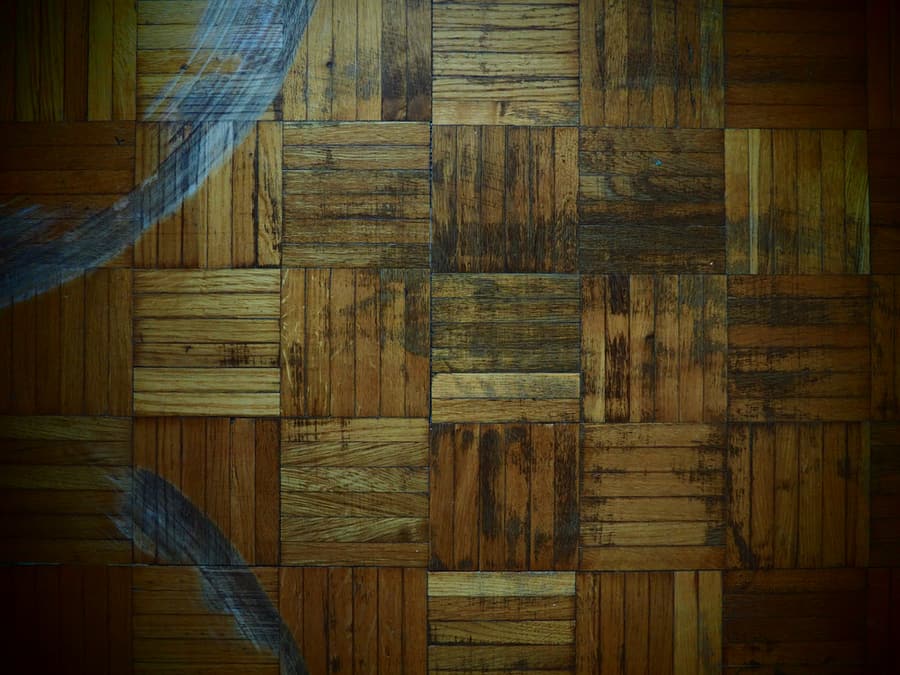
Dragging furniture, dropping it, or any heavy object on the floor can cause a dent that does not look nice and make the whole room look ugly.
There are two ways of repairing a dent on laminate flooring.
1. Streaming for Dent on Laminate Flooring
- Pour a few drops of water on the dent, and placing a damp cotton cloth on top, and iron the cloth piece using moderate force for a few minutes.
- Repeat this process two or three times or until the dent disappears.
Use Danish Oil if the color of the dented area seems lighter than the rest.
2. Repair Kit for Dent on Laminate Flooring
Some people might not be comfortable using streaming, or the dent might be deep, so it is better to use a repair kit.
- If the dent is outward, scrap it first and clean the dented area properly.
- Apply the putty, wax, or crayon and level it well with a putty knife.
- Remove the excess product and clean the area well.
- Let it dry completely.
4. Damaging of Laminate Flooring by Water
Leaking water is one of the main issues damaging laminate flooring, but water leak is not the reason for all water-related issues. The laminate flooring will only get damaged by water if exposed for a long time. The result will be:
- De-coloration of the laminate planks.
- Swelling of the laminate planks.
- Buckling of the laminate planks.
It is necessary to stop the leak if there is any, or there is no use in repairing the planks. The water leak will keep damaging the planks, and if not taken care of in time, it might lead to replacing the whole laminate flooring, which will cost a lot.
If water damages a plank, replacing it is the best option as it causes de-coloration, swelling, and buckling of the planks. It is not possible to repair such pieces.
Early spotting of the water leak as the cause of damage to the laminate flooring is necessary to solve the issue by removing and replacing the planks with new ones.
However, if it is not taken care of in the early stages, the whole floor can get damaged and will have to replace it.
Steps for Removing a Damaged Laminate Plank
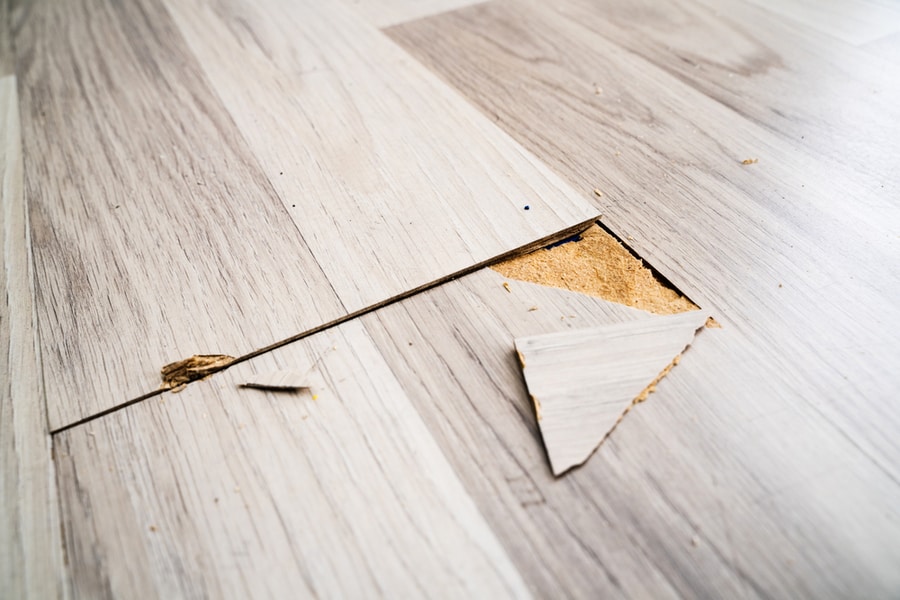
There could be situations when it becomes impossible to repair a damaged laminate floor, and the only solution available is to remove the damaged parts. Mostly there will be few planks, but ignoring these few planks will cost replacing the whole flooring, and there will be no other way of fixing them.
Replacing a few planks getting damaged from water or other things can be easily replaced, especially removing the de-colored, swollen, or buckled planks.
While removing the damaged planks, one needs to be careful not to damage the other planks.
Steps for removing the damaged planks:
- By using a putty knife, remove the damaged planks from the edges.
- Remove all those planks that are even slightly damaged and beyond repair.
- Check the floor beneath the laminate planks for water leaks, molds, or decay.
- If there is a water leak, fix that first before installing the new planks.
- Clean the underneath, let it dry properly, and install the new planks.
- Pointed heels can damage the laminate flooring, so avoid wearing them inside the house.
- Get furniture pads for the furniture.
- The top layer of the laminate is water-resistant, but prolonged contact with water can damage it.
Conclusion

Laminate Flooring is the best option for those who cannot afford wood or stone flooring. However, that is not the only reason for going for this flooring. Aside from being affordable, it gives an aesthetic look to the house, and there are many options from which people can choose.
If someone wants to decorate their house and wants an artistic and fresh look, laminate flooring is the option.
Nonetheless, laminate flooring, like other house material, can get damaged due to one’s carelessness, like moving the furniture, throwing heavy objects, or reasons like; scratches caused by pets, damage due to water issues, change in the weather and temperature, and many more.
So it becomes necessary to check on time. Otherwise, it can cause further damage and might lead to replacing the whole floor.
Taking care of minor issues like scratching, cracking, denting, and so on is not that difficult, and anyone with basic knowledge about repairing can repair it with the right tools.
Also, having the right tools for repairing laminate flooring will not only make the work easy but will also have the work done without a delay. So, it is better to invest a little in the right tools and products that will come in handy someday.
Also, keeping a few spare planks of the laminate when doing the installation will be a great help if some planks get damaged in the future, as it might be hard to get the same-tone laminate.
Frequently Asked Questions
How To Clean Laminate Flooring To Avoid Damage?
- Use a soft broom instead of a hard one to avoid causing scratches.
- Try avoiding the traditional wet mop and use a lightly dampened cloth.
- Avoid using harsh cleaning products like acidic cleaners, sponges, etc.
- Make a mixture of water, white vinegar, and rubbing alcohol in the same proportion in a spray bottle and use it to clean the laminate flooring, but avoid using it regularly.
Why Using a Different Tone of Laminate Planks To Replace the Damaged Ones Are Not Recommended?
One can use a different tone of planks for the replacement process, but it will not give a good impression. The floor will look odd with a different plank color in between.
